 W
WA leper colony, lazarette, leprosarium, or lazar house was historically a place to isolate people with leprosy. The term lazaretto, which is derived from the name of the biblical figure Saint Lazarus, can refer to isolation sites, which were at some time also "colonies", or places where lepers lived or were sent. Many of the first lazarettes were operated by Christian monastic houses. Leper hospitals exist throughout the world to treat those afflicted with leprosy, especially in Africa, Brazil, China and India.
 W
WThe Hôpital Albert Schweitzer was established in 1913 by Albert Schweitzer and Helene Bresslau Schweitzer in Lambaréné, Gabon.
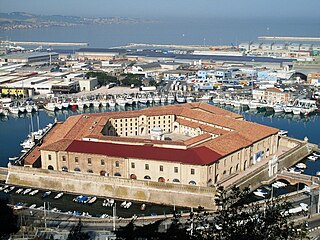 W
WThe Lazzaretto of Ancona, also called the Mole Vanvitelliana, is a pentagonal 18th-century building built on an artificial island as a quarantine station and leprosarium for the port town of Ancona, Italy.
 W
WBatavia is a town in Saramacca District, in the north of Suriname, in the Calcutta resort of the Saramacca district. There is a little harbour near Batavia where the offices of the Netherlands Trading Society were located. Between 1873 and 1883, indentured workers who were recruited from Java to work the plantations, were transported by the Netherlands Trading Society, and arrived in Batavia.
 W
WBelep is a commune in the North Province of New Caledonia, an overseas territory of France in the Pacific Ocean. It has almost 900 people living on 70 km2.
 W
WThe Berhala Island is a small forested island situated in Sandakan Bay in Sandakan, Sabah, Malaysia.
 W
WBethesda was a Moravian leper colony from 1899 until 1933. The name refers to the healing of the paralytic at Bethesda by Jesus. The colony was located near Paranam in the Oost resort on the Suriname River. It was located on the former sugar plantation Groot Chatillon The Catholic leper colony which used to be at Batavia had moved nearby.
 W
WChacachacare is an island in the Republic of Trinidad and Tobago, located at 10° 41' north latitude and 61° 45' west longitude. The island is 360 hectares in area.
 W
WThe Cuba is a palace in the Sicilian city of Palermo. It was built in 1180 by William II of Sicily in his great Royal Park, as his personal recreation pavilion, together with an artificial lake: it shows strong Fatimid art influences, as it was designed and decorated by Arab artists still living in Palermo after the Norman conquest in 1072. During the rule of Bourbon kings of Naples it was annexed to a barracks. In the 16th century it was turned into a lepers' colony.
 W
WD'Arcy Island is an 83-ha island in Haro Strait, south of Sidney Island and east of the Saanich Peninsula.
 W
WLa Désirade is an island in the French West Indies. It forms part of Guadeloupe, an overseas region of France.
 W
WFantome Island is one of the islands in the Palm Island group. It is neighboured by Great Palm Island and is 65 km (40 mi) north-east of Townsville, Queensland on the east coast of Australia. The island is small with an area of 7.8 km2 (3.01 sq mi) and is surrounded by a fringing reef. The Djabugay (Aboriginal) name for this island is Eumilli Island.
 W
WFort Chambray or Fort Chambrai is a bastioned fort located in the precincts of Għajnsielem, on the island of Gozo, Malta. It was built in the mid-18th century by the Order of Saint John, in an area known as Ras it-Tafal, between the port of Mġarr and Xatt l-Aħmar. The fort was meant to be the citadel of a new city which was to replace the Cittadella as the island's capital, but this plan never materialized.
 W
WHomberg is a small town in the northern part of Hesse, a state in central Germany, with about 15,000 inhabitants. It is the seat of the Schwalm-Eder district. In 2008, the town hosted the 48th Hessentag state festival.
 W
WIsla de Cabras is an islet located at the entrance of the San Juan bay in Puerto Rico. It is part of the Palo Seco barrio of the municipality of Toa Baja.
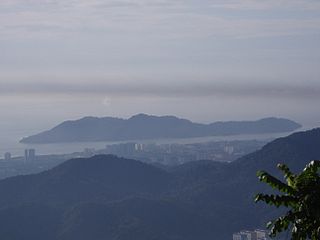 W
WJerejak Island is an islet off the eastern coast of Penang Island in the State of Penang, Malaysia. Located within the Northeast Penang Island District, it is also a short ferry ride from the town of Bayan Lepas near the southeastern tip of Penang Island. It was formerly the main leper asylum for the Straits Settlements (1868), a Quarantine Station (1875) and a penal colony (1969).
 W
WKalaupapa National Historical Park is a United States National Historical Park located in Kalaupapa, Hawaiʻi, on the island of Molokaʻi. Coterminous with the boundaries of Kalawao County and primarily on Kalaupapa peninsula, it was established by Congress in 1980 to expand upon the earlier National Historic Landmark site of the Kalaupapa Leper Settlement. It is administered by the National Park Service. Its goal is to preserve the cultural and physical settings of the two leper colonies on the island of Molokaʻi, which operated from 1866 to 1969 and had a total of 8500 residents over the decades.
 W
WKalawao County is a county in the U.S. state of Hawaii. It is the smallest county in the 50 states both by population and land area. The county encompasses the Kalaupapa or Makanalua Peninsula, on the north coast of the island of Molokaʻi. The small peninsula is isolated from the rest of Molokaʻi by cliffs over a quarter-mile high; the only land access is a mule trail.
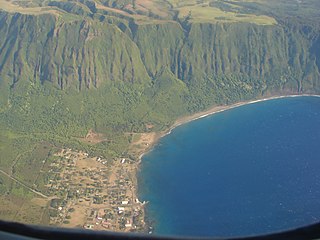 W
WKalaupapa is a small unincorporated community on the island of Molokaʻi, within Kalawao County in the U.S. state of Hawaii. In 1866, during the reign of Kamehameha V, the Hawaii legislature passed a law that resulted in the designation of Molokaʻi as the site for a leper colony, where patients who were seriously affected by leprosy could be quarantined, to prevent them from infecting others. At the time, the disease was little understood: it was believed to be highly contagious and was incurable until the advent of antibiotics. The communities where people with leprosy lived were under the administration of the Board of Health, which appointed superintendents on the island.
 W
WKalawao is a location on the eastern side of the Kalaupapa Peninsula of the island of Molokai, in Hawaii, which was the site of Hawaii's leper colony between 1866 and the early 20th century. Thousands of people in total came to the island to live in quarantine. It was one of two such settlements on Molokai, the other being Kalaupapa. Administratively Kalawao is part of Kalawao County. The placename means "mountain-side wild woods" in Hawaiian.
 W
WLazaretto Island, is located two nautical miles northeast of the city of Corfu. The island has an area of 7 ha and is administered by the Greek National Tourist Organization. It gets its name from the lazaretto located there.
 W
WThe Lazzaretto Vecchio is an island of the Venetian Lagoon, northern Italy, located near the Lido of Venice. Between 1403 and 1630 it housed a hospital which cared for people during the plague epidemics and as a leprosarium. It was later used, as were other islands, as a military post. It covers an area 2.53 hectares large.
 W
WSan Lazzaro is a 19th-century, Roman Catholic church located on Via Aurelia number 298 in the neighborhood of San Lazzaro di Sarzana, just south-east of Sarzana, region of Liguria, Italy. The parish church happens to be located, for historical reasons, within the region of Tuscany.
 W
WThe Leper War on Kauaʻi also known as the Koolau Rebellion, Battle of Kalalau or the short name, the Leper War. Following the overthrow of the Kingdom of Hawaii, the stricter government enforced the 1865 "Act to Prevent the Spread of Leprosy" carried out by Attorney General and President of the Board of Health William Owen Smith. A revolt broke out in Kauaʻi, against the forced relocation of all infected by the disease to the Kalaupapa Leprosy Colony of Kalawao on the island of Molokai.
 W
WMakogai is an island belonging to Fiji's Lomaiviti Archipelago. Covering an area of 8.4 square kilometres, it is situated at 17.26° South and 178.58° East. It has a maximum altitude of 267 metres (876 ft). Makogai is visible from Ovalau.
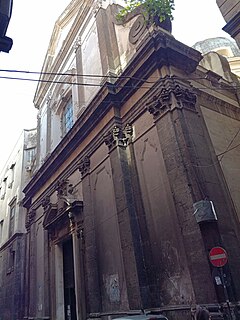 W
WSanta Maria della Pace is a Roman Catholic church attached to a monastery and hospital, located on Via dei Tribunali corner with Via Castel Capuano, just after the piazzetta Sedil Capuano, in Naples, Italy.
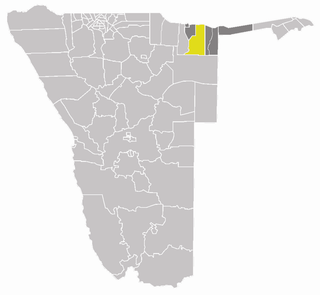 W
WMashare is a settlement in the Kavango East Region of Namibia, just east of Rundu, the regional capital. It is the district capital of Mashare Constituency.
 W
WPeel Island is a small heritage-listed island located in Moreton Bay, east of Brisbane, in South East Queensland, Australia. The island is a locality within the local government area of Redland City. In the 2016 census, Peel Island had a population of 0 people.
 W
WPenikese Island is a 75-acre (0.117 sq mi) island off the coast of Massachusetts, United States, in Buzzards Bay. It is one of the Elizabeth Islands, which make up the town of Gosnold, Massachusetts. Penikese is located near the west end of the Elizabeth island chain.
 W
WQuail Island is an 81 ha uninhabited island within Lyttelton Harbour in the South Island of New Zealand, close to Christchurch. The island was given its European name by Captain William Mein Smith who saw native quail here in 1842; though they were already extinct by 1875. Ōtamahua means 'the place where children collect sea eggs'. Te Kawakawa refers to the pepper trees found on the island.
 W
WSaint-Lazare Prison was a prison in the 10th arrondissement of Paris, France.
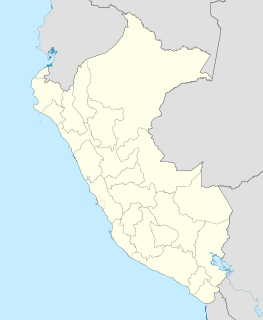 W
WSan Pablo de Loreto is a village, and the location of a leper colony in Peru. The village is located near Iquitos. The colony was constructed in 1925. In 1941, it became an agricultural colony in which the patients had to work the fields. In 1952, Che Guevara and Alberto Granado worked at the colony. The colony was home to around 600 people at the time. By 1957, the number of patients had increased to about 780. The colony was closed for admission from 1967 onwards, and a 1968 report by Dr Masayoshi Itoh described that 87% of the patients were in need of surgical treatment. The leprosium has since then closed, and the patients have been transferred to Iquitos.
 W
WSpinalonga is an island located in the Gulf of Elounda in north-eastern Crete, in Lasithi, next to the town of Plaka. The island is further assigned to the area of Kalydon. It is near the Spinalonga peninsula – which often causes confusion as the same name is used for both. The official Greek name of the island today is Kalydon.
 W
WTaddiport is a hamlet in North Devon, England, near Great Torrington. The name is believed to derive from toad, a place where toads were found. In the Middle Ages it was a leper colony. A field system next to the hamlet is still divided up as for the medieval strip system of farming. During the years of operation of the Rolle Canal the canal had a quay across the river Torridge from Taddiport. Taddiport appears on the early 15th century Evesham world map; its inclusion has led many to believe that the map-maker hailed from the small hamlet.
 W
WVillingili, is an uninhabited islet in Lakshadweep, India. It is located at the southwestern end of Minicoy's reef, in Maliku Atoll.